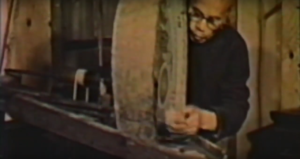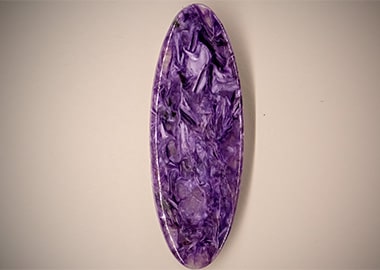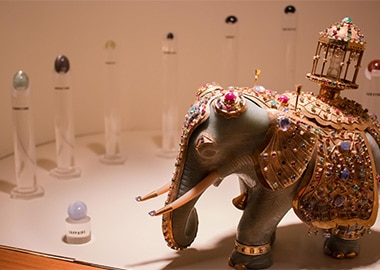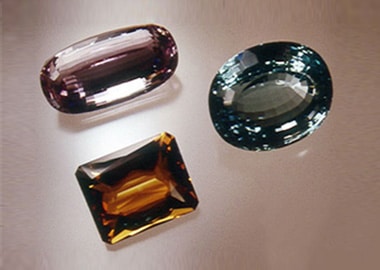What is Lapidary?
Lapidary is the art of cutting and polishing stone. Lapidary has its roots in prehistory, as early humans began fashioning tools and weapons from stone. In time, these techniques were also used for items of personal adornment. Stone carving evolved as an art in many cultures throughout the world.
During the 1950s, lapidary became a popular hobby in the United States. Hobbyists enjoyed cutting and polishing gemstones and mounting them in prefabricated jewelry settings or in metalwork of their own creation (silversmithing). Primarily, lapidary hobbyists enjoyed creating two types of stonework: cabochons and faceted stones.
Cabochon

A cabochon is a gemstone cut with a curved or domed top surface and a flat or convex bottom. Cabochon cutting is the technique that best displays the colors and patterns of opaque stones.
Faceted Stone

A faceted stone is a gemstone that has a series of flat polished surfaces. Faceting enhances the reflection of light passing through the stone, causing it to sparkle with color and brilliance. Faceting is primarily used on transparent or translucent stones.
Joseph F. Lizzadro, Sr.
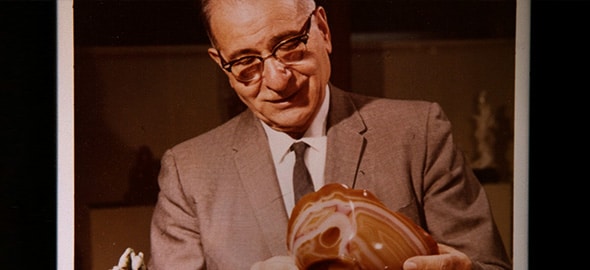
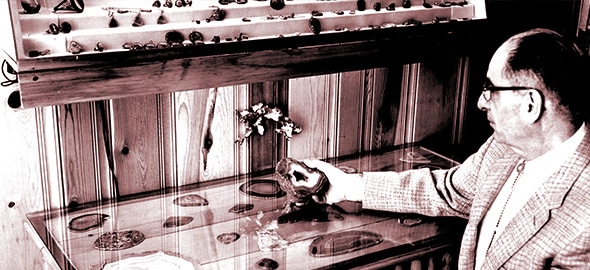
Hobbyists like Joseph F. Lizzadro, Sr. found lapidary to be relaxing yet exciting because each stone is unique. Lapidary clubs were formed around the country and many still exist today. Perhaps June Culp Zeitner sums up the meaning of lapidary art best in the preface to her book Gem and Lapidary Materials for Cutters, Collectors, and Jewelers:
“Lapidary as an art is ageless, classless, and without national boundaries. It is unique in many ways. It has contributed to social and religious beliefs and to customs, rites, superstitions, and trade. Furthermore, the expert lapidary does not necessarily have a college degree, is not necessarily a professional cutter, and might even be self-taught. He does not have to use state-of-the-art machines.“
Carver’s Bench
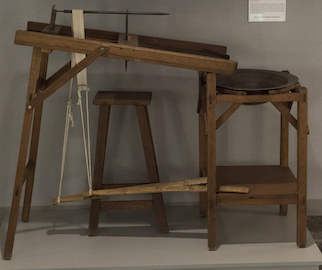

Jade is so hard that metal tools cannot cut it. Only a harder stone like diamond or corundum can cut and shape jade. Its exceptional toughness makes jade ideal for the creation of intricate, fragile pieces. The Chinese carver’s bench is typical of the equipment on which many beautiful art objects were created. The corundum- tipped iron bit, powered by the feet of the carver, slowly transformed a jade boulder into a work of art.
“What a true lapidary artist needs is an eye for beauty originality, and excellent craftsmanship. Equipment helps, of course, but the advances in lapidary art have come about largely through the talent and dedication of people throughout the years who chose stones as the medium of their art.‟ June Culp Zeitner
